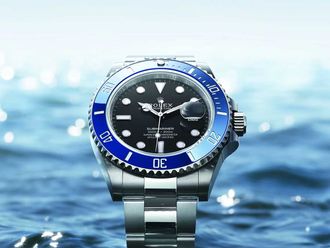Johannesburg: African firms exporting everything from Kenyan roses and South African BMWs to Europe are suffering from euro and sterling weakness that is making the continent a pricier destination just before its first World Cup.
In South Africa, which rolls out the red carpet in June to thousands of World Cup visitors, many from Europe, fruit growers are trying to shift export lines to the Middle East and Asia, whose currencies have remained firmer than European units.
South Africa's rand is 17 per cent stronger against the euro compared to a year ago, and 14 per cent against the pound — meaning Europeans arriving for the World Cup will not find it as cheap a destination as they imagined when they booked their flights in 2009.
Kenya's shilling has also appreciated in the last year, by 11 per cent against sterling and 7 per cent against the euro, making a safari stopover on the way home a far from cheap option.
The Indian Ocean island's New Mauritius Hotels last week cited the weak pound and euro as reasons for an uncertain earnings outlook, reflecting the fears of many tourism operators on the continent.
South African wine and drinks firms Distell Group and KWV, who have been enjoying World Cup-related wine promotions in UK and German supermarkets, are also likely to be among those feeling the pinch.
Deficit concerns
Europe accounts for 30 per cent of all South African exports, and with concerns about budget deficits likely to hang over the euro and pound for the foreseeable future, trading for many exporters is likely to remain tough.
"It will impact on sales," said Justin Chadwick, chief executive of South Africa's Citrus Growers Association, which represents an industry that exports $600 million (Dh2.2 billion) of oranges and other fruit each year, second only to Spain.
"A lot of people are trying to divert fruit to the Middle East and Far East, but in reality there's very little one can do about it," Chadwick said.
Another sector likely to be hit is the automotive industry, which accounts for 6 per cent of South African gross domestic product and 11 per cent of all exports.
Nearly half of those shipments, worth a total 25 billion rand ($3.2 billion) in 2009, are to Europe, according to industry body NAAMSA.
Horticultural woes
In Kenya, much of the brunt will be borne by the horticultural sector, the east African country's leading hard currency earner that raked in nearly $1 billion last year. Most of Kenya's flower and fruit exports are to Europe.
Neighbouring Uganda and Ethopia have similar industries but on a much smaller scale.
One region that stands to gain, however, is the 14-country CFA franc zone, whose currency is pegged to the euro and whose exports to the rest of the world will therefore become more competitive.
Shipments of commodities priced in dollars will also provide a local currency windfall.
"The whole of the CFA zone from Senegal down to Cameroon is going to be the beneficiary of dollar-based exports — oil, cocoa, coffee, groundnuts, you name it," said Christopher Hartland-Peel of London-based brokerage Exotix.
- 17%: rand's appreciation to euro compared to 2009
- 14%: shilling's appreciation to euro over same period
- $1b: Kenya's horticultural exports in 2009












